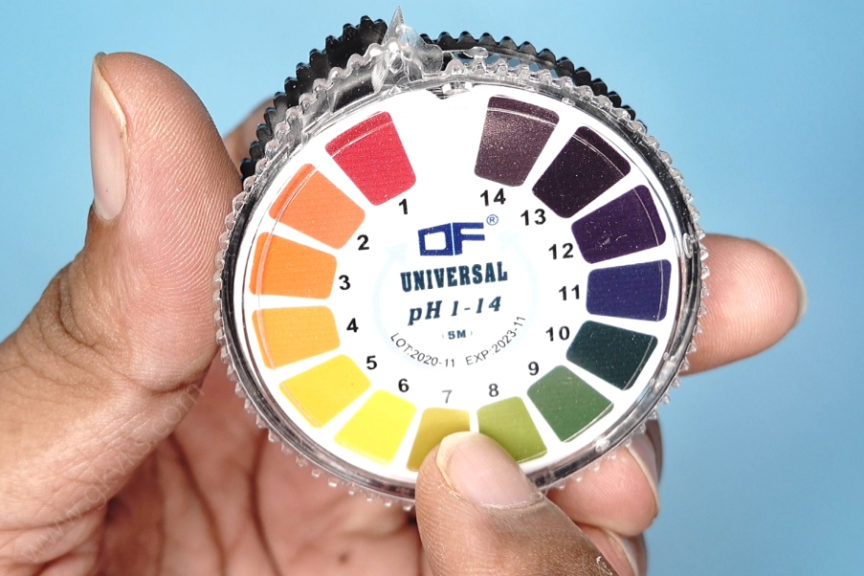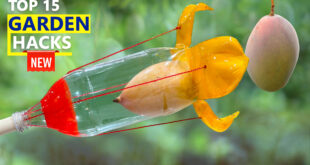In Today’s post, we will look into 3 easy methods and hacks to test your garden soil PH at home and discuss the importance of ideal soil PH for plant growth and yield.
Sunlight, water, nutrients—these are the basic requirements for plants to thrive. But did you know that your garden soil has another crucial requirement that can determine whether your plants thrive or struggle to grow? It’s a soil property called pH, and an ideal range of soil PH is indispensable for proper nutrient absorption by the roots. Most plants need a PH between 6 to 6.5 for best growth, though some acid loving plants need a lower PH.
Now, Let me demonstrate 3 easy ways to test your soil PH at home.
The First Method is using Litmus Paper. This is simple school chemistry. Also this is not expensive. You can buy this simple litmus paper kit at any stationary store or even online. This is just litmus paper with color chart showing a PH value for each color that matches with your test result. PH of 7 is Neutral, PH below 7 is acidic and above 7 is alkaline. The most important thing is to use distilled water for all these tests you conduct, because the PH of distilled water is neutral.

So, How to Test Soil Using Litmus Paper Method
- Collect one tablespoon of soil from your garden either from container or from ground. You can take the soil from a little deeper like 2 inches below the soil.
- Add equal amount of distilled water – that’s 1:1 ratio. We are taking distilled water because it has neutral PH of 7. You can also take water from your water purifier, test it with litmus paper first. If it’s neutral, you can use it but only if distilled water is not available. Distilled water is easily available in big cans and also in medical stores in small 5 or 10 ml packs that are used for medicine reconstitution. So, for 1 table spoon of soil you would add 1 tablespoon of water.
- Now nicely mix this by Stirring for few seconds.
- Let it sit for 10 minutes.
- Start stirring the sample again and now dip the litmus paper to take your measurement. Wait for few minutes for color change and then match it with the color coding chart that came along with your litmus paper kit.
Pros of this method: It’s Easy to use and inexpensive
Cons of this method: It’s sometimes difficult to read or match colors, so, loss of precision.
The Second Method is a rough and easy DIY method you can try at home to know whether your soil is acidic or alkaline.
- Take a small amount of soil from your garden or container in a small glass.
- Now Pour some vinegar to this soil sample. If it fizzes and bubbles you have an alkaline soil because the alkaline content in soil reacts with acid like vinegar which is chemically acetic acid.
- Take another soil sample from your garden. Here for demonstration purpose, I know that this is an acidic soil. Now Add baking soda one or two teaspoons and mix it with soil.
- Then wet the soil baking soda mix with distilled water. If it fizzes and bubbles your soil is acidic, because the acidic content in soil reacts with a base or alkaline stuff like baking soda. That’s it!
The Third Method is using Soil PH Testers – Which one to Choose, these manual types or digital soil PH testers. These are easy to use portable gadgets with probes to insert into the soil. These give instant readings. But these manual type of probe testers are not so reliable but they are inexpensive and handy. The digital testers are more accurate but expensive.
This soil testing is fun and you can share this with your kids to teach them simple science or chemistry.
 GKVKs – Gardening Tips and Store Gardening Tips and Store
GKVKs – Gardening Tips and Store Gardening Tips and Store



